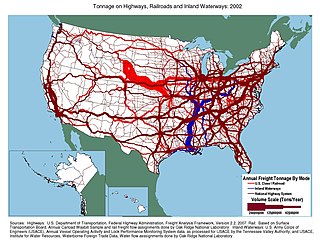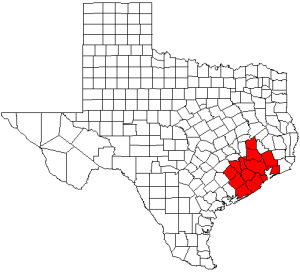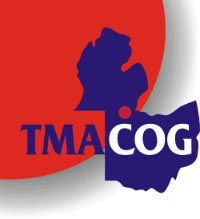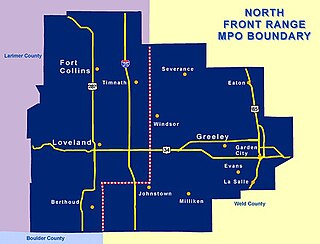
Transportation in the United States is facilitated by road, air, rail, and waterways. The vast majority of passenger travel occurs by automobile for shorter distances, and airplane for longer distances. In descending order, most cargoes travel by railroad, truck, pipeline, or boat; air shipping is typically used only for perishables and premium express shipments. Transportation is the largest source of greenhouse gas emissions by the United States.

Transportation planning is the process of defining future policies, goals, investments, and spatial planning designs to prepare for future needs to move people and goods to destinations. As practiced today, it is a collaborative process that incorporates the input of many stakeholders including various government agencies, the public and private businesses. Transportation planners apply a multi-modal and/or comprehensive approach to analyzing the wide range of alternatives and impacts on the transportation system to influence beneficial outcomes.

Greater Houston, designated by the United States Office of Management and Budget as Houston–The Woodlands–Sugar Land, is the fifth-most populous metropolitan statistical area in the United States, encompassing nine counties along the Gulf Coast in Southeast Texas. With a population of 6,997,384 people at the 2018 census estimates and over 7 million in 2020, Greater Houston is the second-most populous in Texas after the Dallas–Fort Worth metroplex. The approximately 10,000-square-mile (26,000 km2) region centers on Harris County, the third-most populous county in the U.S., which contains the city of Houston—the largest economic and cultural center of the South—with a population of more than 2.3 million. Greater Houston is part of the Texas Triangle megaregion along with the Dallas–Fort Worth metroplex, Greater Austin, and Greater San Antonio. Greater Houston also serves as a major anchor and economic hub for the Gulf Coast. Its Port of Houston is the second largest port in the United States, sixteenth largest in the world, and leads the U.S. in international trade.

Metro is the regional government for the Oregon portion of the Portland metropolitan area, covering portions of Clackamas, Multnomah, and Washington Counties. It is the only directly elected regional government and metropolitan planning organization in the United States. Metro is responsible for managing the Portland region's solid waste system, coordinating the growth of the cities in the region, managing a regional parks and natural areas system, and overseeing the Oregon Zoo, Oregon Convention Center, Portland's Centers for the Arts, and the Portland Expo Center. It also administers the Regional Illegal Dumping Patrol or RID Patrol which is tasked with cleaning up illegal dumping and it is the designated point of contact for citizens to report illegal dumping in the Portland metro area.
The United States federal Transportation Equity Act for the 21st Century (TEA-21) was a federal transportation bill enacted June 9, 1998, as Public Law 105-178. TEA-21 authorized federal surface transportation programs for highways, highway safety, and transit for the 6-year period 1998-2003. Because Congress could not agree on funding levels, the Act, which had continued past 2003 by means of temporary extensions, was allowed to lapse.

A metropolitan planning organization (MPO) is a federally mandated and federally funded transportation policy-making organization in the United States that is made up of representatives from local government and governmental transportation authorities. They were created to ensure regional cooperation in transportation planning. MPOs were introduced by the Federal-Aid Highway Act of 1962, which required the formation of an MPO for any urbanized area (UZA) with a population greater than 50,000. Federal funding for transportation projects and programs are channeled through this planning process. Congress created MPOs in order to ensure that existing and future expenditures of governmental funds for transportation projects and programs are based on a continuing, cooperative, and comprehensive (“3‑C”) planning process. Statewide and metropolitan transportation planning processes are governed by federal law. Transparency through public access to participation in the planning process and electronic publication of plans now is required by federal law. As of 2015, there are 408 MPOs in the United States.

The Houston-Galveston Area Council (H-GAC) is the region-wide voluntary association of local governments in the 13-county Gulf Coast Planning Region of Texas. The organization works with local government officials to solve problems across the area. H-GAC was founded in 1966.
This is a documentation of the routes, highways, parking requirements, or anything related to transportation in Houston.

TMACOG is the Toledo Metropolitan Area Council of Governments, a voluntary organization of dues-paying members. TMACOG members include governmental and non-governmental organizations in northwest Ohio and southeast Michigan: cities, counties, villages, and townships, as well as schools and colleges, park districts, businesses, and other groups concerned with quality of life in the region. TMACOG is BOTH a Regional Council and a Metropolitan Planning Organization.

The Denver Regional Council of Governments is a nonprofit, membership organization of local governments in the Denver region of the State of Colorado. DRCOG is the designated Metropolitan Planning Organization (MPO) and the Transportation Planning Region (TPR) for the region, as well as the Area Agency on Aging (AAA).
The Texas Department of Transportation (TxDOT) is a governmental agency and its purpose is to "provide safe, effective, and efficient movement of people and goods" throughout the state. Though the public face of the agency is generally associated with maintenance of the state's immense highway system, the agency is also responsible for aviation in the state and overseeing public transportation systems.
The Capital Area Metropolitan Planning Organization (CAMPO) is the federally mandated metropolitan planning organization (MPO) responsible for comprehensive transportation planning in the Austin, Texas, USA area, including Williamson, Travis, Hays, Bastrop, Burnet and Caldwell counties. CAMPO is one of 25 Texas MPOs.
The H-GAC 2035 Regional Transportation Plan is the long range transportation plan for the Houston-Galveston Area and serves as blueprint for further planning to be undertaken in the region over the next 30 years. The plan which was developed in a joint cooperation with Cities, Counties, Texas Department of Transportation (TxDOT) and METRO. The RTP combines research, plans and programs by various organizations into one comprehensive plan which is updated every four years. The RTP's main aim is to identify long-range transportation needs, prioritize programs and projects and to provide a forum for dialogue and regional problem solving.

The Tampa Bay Area Regional Transit Authority, or TBARTA, is a regional transportation agency of the U.S. state of Florida which was created on July 1, 2007. The purpose of the agency is "to plan, develop, finance, construct, own, purchase, operate, maintain, relocate, equip, repair, and manage multimodal systems in Hernando, Hillsborough, Manatee, Pasco, and Pinellas Counties." The agency coordinates its efforts with the Florida Department of Transportation to improve transportation in the Tampa Bay Area.

Light rail in the United States is a mode of rail-based transport, usually urban in nature. When compared to heavy rail systems like commuter rail or rapid transit (subway), light rail systems are typically are designed to carry fewer passengers and are capable of operating in mixed traffic or on routes that are not entirely grade-separated. Systems typically take one of four forms: the "first-generation" legacy systems, the "second-generation" modern light rail systems, streetcars, and hybrid rail systems. All of the systems use similar technologies, and some systems blur the lines between the different forms.

The North Front Range Metropolitan Planning Organization (NFRMPO) is an association of 15 local governments working together to improve regional transportation and air quality. The NFRMPO does long-range and short-range planning, and prioritizes which projects in those plans will receive state and federal funding. The goal of the NFRMPO is to enhance air quality and mobility among northern Colorado communities, and between the North Front Range and the Denver Metro area, by developing cooperative working relationships and financial partnerships among our member governments: Berthoud, Eaton, Evans, Fort Collins, Garden City, Greeley, Johnstown, Larimer County, LaSalle, Loveland, Milliken, Severance, Timnath, Weld County, and Windsor, the Colorado Department of Transportation (CDOT), Federal Highway Administration, the Federal Transit Administration (FTA), and the private sector, giving local governments a voice in regional transportation planning.
The North Jersey Transportation Planning Authority (NJTPA) is the federally authorized metropolitan planning organization (MPO) for the 13-county northern New Jersey region, one of three MPOs in the state. NJTPA's annual budget is more than $2 billion for transportation improvement projects. The Authority also participates in inter-agency cooperation and receives public input into funding decisions. The NJTPA sponsors and conducts studies, assists county planning agencies and monitors compliance with national air quality goals. The Authority provides federal funding to support the planning work of its 15 subregions. The funds are matched by a local contribution. As vital partners in regional planning work, the subregions help bring a local perspective to all aspects of NJTPA's work to improve the northern New Jersey transportation network.
The Sustainable Communities and Climate Protection Act of 2008, also known as Senate Bill 375 or SB 375, is a State of California law targeting greenhouse gas emissions from passenger vehicles. The Global Warming Solutions Act of 2006 sets goals for the reduction of statewide greenhouse gas emissions. Passenger vehicles are the single largest source of greenhouse gas emissions statewide, accounting for 30% of total emissions. SB 375 therefore provides key support to achieve the goals of AB 32.
Urban freight distribution is the system and process by which goods are collected, transported, and distributed within urban environments. The urban freight system can include seaports, airports, manufacturing facilities, and warehouse/distribution centers that are connected by a network of railroads, rail yards, pipelines, highways, and roadways that enable goods to get to their destinations.
A transportation improvement program (TIP) is a United States federally mandated requirement for all metropolitan planning organizations (MPOs). The TIP, also known as a short-range plan, lists all transportation projects in an MPO's metropolitan planning area that seek federal transportation funding within at least a four-year horizon.










